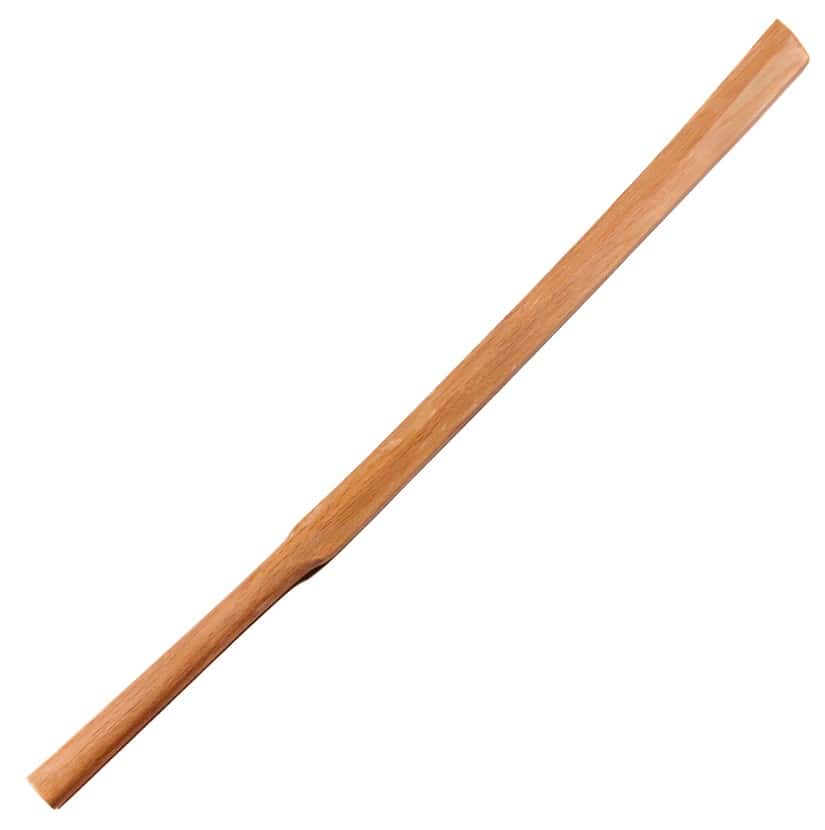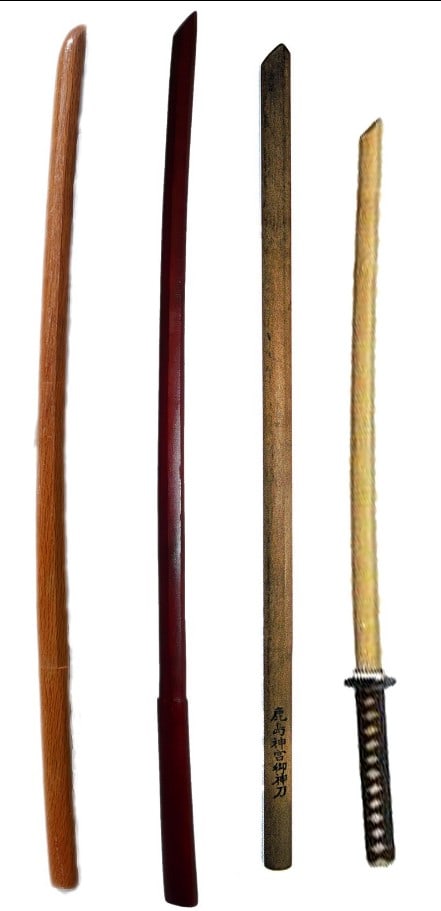Bokken in Focus: Harnessing Skill and Discipline
In the realm of martial arts, where discipline and precision intertwine, the bokken emerges as a symbol of focused training and mastery. Crafted from wood yet carrying the weight of centuries of tradition, the bokken is more than a mere training tool; it embodies the dedication and respect inherent in the martial journey.
As we delve into the world of the bokken, we uncover its unique significance in cultivating skill, discipline, and the essence of martial arts philosophy.
What is a bokken?
A bokken, derived from the Japanese words “bok” meaning “wood” and “ken” meaning “sword,” is a wooden sword integral to the training of kenjutsu, the art of Japanese swordsmanship.
Resembling katana, wakizashi, and tantō swords, bokken serve as practice tools, crafted from red or white oak, and sometimes ornately adorned with mother-of-pearl inlay and intricate carvings.
Unlike more flexible bamboo practice swords called shinai, bokken offer durability and safety in training scenarios. Historically, their use dates back to the Muromachi Period (1336–1600) for samurai training, shielding actual swords from wear and damage.
Bokken’s lethal potential is evident in legends like Miyamoto Musashi’s victory over an opponent using one. While manufactured traditionally by woodworkers, dedicated workshops now produce them, preserving their craft.
The “standard bokken,” devised by Aramaki Yasuo and the All Japan Kendo Federation, further defined bokken design for practices like Kendo, Iaido, and Aikido.
What is a bokken used for?
A bokken serves as a safe and cost-effective substitute for a real sword in various martial arts disciplines like aikido, kendo, iaido, kenjutsu, and jodo.
Its wooden construction minimizes the maintenance required compared to a katana, while providing a reduced risk of injury to both the user and fellow practitioners during training.
Despite its advantages over sharp-edged weapons, a bokken can still cause serious injuries like those resulting from club-like weapons, such as compound fractures and internal injuries. While not meant for sparring, it’s employed in kata to simulate the sensation of wielding an actual sword.
The All Japan Kendo Federation introduced specific bokutō exercises in 2003 for kendo practitioners, enhancing their foundational skills.
Additionally, suburitō, specialized bokken used for solo cutting exercises called suburi, are thicker and heavier, demanding both strength and technique development. They are distinct from standard bokken and are unsuitable for paired practice.
What types of bokken are there?
Bokken, wooden training swords used in martial arts, can mimic a range of weapon styles, such as nagamaki, nodachi, yari, naginata, and kama. The most popular types encompass:
- Daitō or Tachi (Katana-sized): Resembling the long katana sword, daitō bokken boasts an approximate total length of 102 cm, with a tsuka (handle) around 24 cm.
- Shōtō or Kodachi or Wakizashi Bō (Wakizashi-sized): Reflecting the shorter wakizashi sword, shōtō bokken measures around 55 cm in total length, with a tsuka of approximately 14 cm.
- Tantō Bō (Tantō-sized): Modeled after the tanto dagger, this bokken mirrors the smaller tanto size.
- Suburitō: Available in both daitō and shōtō sizes, suburitō showcases a distinctive design suitable for specialized training.
These bokken styles may differ slightly among various traditional Japanese martial arts schools (koryu), particularly in length, tip shape, and the presence of a tsuba (hilt guard). The All Japan Kendo Federation establishes specific dimensions for bokken used in modern kendo kata.
Bokken materials predominantly include red oak and white oak, with white oak varieties having a higher prestige. Other woods like ebony, biwa, and sunuke are also used in Japan, while hickory, persimmon, ironwood, and walnut find use in the Americas. The choice of biwa wood even ties to folk superstitions about its impact on wounds.
Where can I get a bokken?

E-BOGU is a prominent global supplier of Martial Arts Equipment, standing as a foremost choice for practitioners worldwide.
With an extensive network of branch offices in the USA, Japan, Chile, Ecuador, Mexico, Germany, Hungary, Portugal, and China, E-BOGU delivers top-tier Martial Arts gear across the spectrum – catering to beginners and esteemed masters alike.
The E-BOGU team comprises experienced Martial Arts instructors, who have not only excelled in International tournaments but have also secured notable rankings on the world stage.
Conclusion
In the hands of dedicated practitioners, the bokken stands as a powerful conduit for channeling skill, discipline, and a profound sense of respect. Through its disciplined training, individuals not only sharpen their physical techniques but also nurture qualities that extend far beyond the dojo.
As we conclude our exploration into the world of the bokken, we recognize its pivotal role in harnessing skill and discipline, and its ability to instill a deeper understanding of martial arts principles that resonate on and off the training floor.

